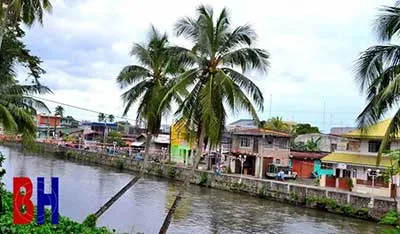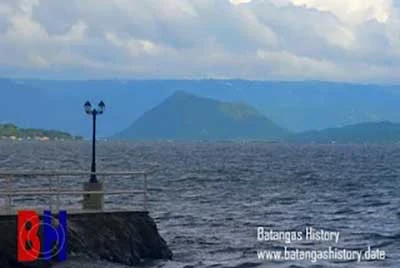5 Things Batangas Is Known For
Batangas is one of the Republic of the Philippines’ 81 provinces. It is situated at the southern part of the country’s largest island of Luzon. It belongs to a region called 4-A or the CALABARZON, short for the provinces of Cavite, Laguna, Batangas, Rizal and Quezon.
Batangas has a total land area of 3,119.75 and a population of 2.377 million as per the 2020 Philippine Census. The province has 34 administrative units, four of which are cities (Batangas, Lipa, Santo Tomas and Tanauan) and the rest municipalities. The town of Calaca is expected to be elevated to the status of a city in the near future.
There are many things that Batangas is known for: its beaches and resorts, the religious dance subli, its own take on the bulalo (a beef stew) and the goto (also a stew made of cow innards). However, in this article, Batangas History, Culture and Folklore gives particular focus on what are arguably the most iconic things that Batangas is known for.
TAAL VOLCANO
Taal Volcano, one of the Philippines’ most active, is deceptive in appearance. What the eye can see is postcard pretty, a group of small islands that appear to be floating on Taal Lake. Within these islands are “potential” eruption vents identified by the Philippine Institute of Volcanology and Seismology (Phivolcs) – the Main Island Crater, Binintiang Malaki, Pirapiraso, Off-Calauit and Binintiang Munti1.
While these vents were identified from fairly recent or historical eruptions, the lake on which these islands appear to be floating is actually what remains of a prehistoric caldera. A caldera is a large cauldron-like indentation in the ground created when a large magma chamber is emptied after an eruption and the surface collapses. There are also submerged “eruptive centers2” beneath the surface of the lake.
The historic – i.e. recorded – eruptions of Taal Volcano since the arrival of the Spanish conquistadores have, in fact, shaped the geopolitics of Batangas Province as we know it today. The conquistadores first ventured into Luzon in 1570. Soon after, the Augustinian religious order was given the task of setting up Christian communities called pueblos in what was then called “Provincia de Bombon,” which would evolve into what is now known as Batangas Province.
This, the friars did, so that the pueblos along with the accompanying convents or religious houses were established in Taal (1572), Batangas (1580), Tanauan (1584), Sala (1586), Lipa (1605) and Baoang (1641, presently Bauan)3. All these communities were founded along the shores of Lake Taal or Bombon, as it used to be called.
The eighteenth century was an especially active century for Taal volcano, with particularly violent eruptions in 1749 and 1754. The latter, in fact, lasted for roughly half a year and dumped so much debris into the landscape that the topography of the province changed.
Thus, it was to avoid the peril posed by the volcano that inhabitants of the abovementioned communities, with the exception of Batangas, started relocating away from it. Taal was relocated closer to Balayan Bay. Tanauan and Sala would be moved farther to the west and become one community. Lipa would relocate first to Lumang Lipa in what is now Mataasnakahoy; then to Balete; before ending up closer to what is now the poblacion. Finally, Baoang or Bauan would eventually be relocated close to Batangas Bay via Durungao.
Taal Volcano went relatively quiet after its spate of activities in the eighteenth century, but it gave a reminder of what it could do in 1911 with an eruption that killed more than a thousand people. Of course, as recently as 2020, there was another eruption that uprooted thousands and kept the eyes of the nation as well as the world on the volcano, making it definitely one of the things Batangas is known for.
 |
| Image credit: Yvette Tan - [1], CC BY 2.0, https://commons.wikimedia.org/w/index.php?curid=75060459. |
COFFEE
Another thing that Batangas is known for is coffee – to be specific, “kapeng barako.” The province’s association with coffee probably dates back to the late nineteenth century when the now-city of Lipa was awarded the status of a villa or a small city by the Queen Regent of Spain, Maria Cristina, for its income derived from its coffee production.
At that time, the coffee production in Lipa and other municipalities in Batangas made the Philippines the fourth largest coffee-producing country in the world4. A blight caused the coffee plants to die out, however, so that even before the end of the century, production had decreased to practically negligible levels.
To be clear, however, the coffee variety that made Lipa and Batangas so wealthy then was coffea arabica, believed to have originated in Ethiopia and initially cultivated in Yemen5. When the coffee plants died out, planters turned to other crops such as sugarcane, abaca, corn and others.
Early in the twentieth century, however, the new American colonial government, aware of Lipa’s and Batangas’ erstwhile coffee production capabilities, wanted to know if the coffee industry could be revived. The Bureau of Agriculture brought in new coffee varieties in the hope that some of these would prove to be blight resistant.
Among the more robust of these experimental varieties was a type of coffea liberica or Liberian Coffee that the Americans brought in from Java in Indonesia. It was first experimentally planted at the Roxas Estate in Lipa, from where seeds would eventually be taken when the planting of liberica caught on among landowners in Batangas6.
Probably because of its powerful flavor and aroma, coffea liberica became known in Batangas as “barako,” from the Spanish “verraco” or boar, an association with strength and masculinity. The term would eventually become popular, so that “barako” became the vernacular word for liberica.
In the present day, ironically the province of Cavite has a higher coffee production than Batangas, accounting as it does for as much as 67% of the CALABARZON’s total coffee output. In contrast, Batangas produces roughly only 13%7. But probably because of the late nineteenth century coffee boom in Lipa and Batangas that raised the country’s stature worldwide as a producer as well as the fact that Batangas planters would popularize the planting of liberica, coffee continues to be among the things that Batangas is known for.
 |
| Batangas lomi is distinct in the absence of vegetables. |
LOMI
There are also local delicacies that Batangas is known for, foremost of which is a noodle dish characterized by a thick starchy broth mixed with a range of viands, the choice of which ultimately depends upon the restaurant or diner that offers it. This noodle dish is called the “lomi,” albeit it is wise to avoid confusion by saying “Batangas lomi” or “loming Batangas.”
This is because the lomi is not, per se, an exclusive Batangas delicacy. Lomi in places other than Batangas will probably be served with vegetables. This raises the suspicion that non-Batangas lomi is originally a local take on the “lo mein,” a Chinese noodle dish cooked with the noodles (mein or mian) tossed (lo) in a wok or pan with the other ingredients8.
On the other hand, in Batangas, vegetables are a no-no in a bowl of lomi. This makes the Batangas version farther removed from the Chinese lo mein. The original recipe was developed by a Lipa-based Chinese immigrant named To Kim Eng.
According to his own family’s story, To loved to play mah-jong with friends, whom he would serve a noodle snack “that was so good that its reputation started to grow around the city by word-of-mouth alone9.” This noodle snack, To called the lomi.
The power of word-of-mouth advertising, albeit in this case probably unintentional, cannot be understated. Indeed, soon To was getting orders for not just the lomi but other noodle dishes as well. In 1968, he and his wife Natalia opened a small diner called the Lipa Panciteria, a mere stone’s throw from the public market.
The rest, as the cliché goes, has been history. The lomi – inexpensive, flavorful and heavy in the stomach – was an immediate hit among locals. So much so that the humble panciteria that To and his wife opened became something of a veritable cathedral to the lomi faithful.
As word of the lomi began to spread not just in Lipa but also in other administrative units of Batangas, the ultimate measure of To’s and the lomi’s success came in the form of imitation. In other words, many other establishments – not just restaurants but even small diners hastily set up in shacks and even garages – began offering their own versions of the lomi with little innovations here and there.
In the present day, Batangas lomi is so entrenched in the local culture that it is offered in countless restaurants and diners around the province. Because it is ordered by people regardless of economic or social standing, and it has become known even outside of the Batangas’ borders, it is definitely one of the things Batangas is known for. Without the vegetables.
 |
| The change in accent first becomes discernible past Lemery, shown at the far side of the Pansipit River. |
A DISTINCT DIALECT AND ACCENT
Perhaps among the most common of stereotypes that Batangas is known for is the distinct “punto” or accent with which inhabitants of the province speak. Moreover, while the language spoken in Batangas is also Tagalog, there are many words used in the province that one does not hear from inhabitants of other Tagalog provinces. Thus, it can be said that there is a distinct dialect in Batangas.
What is, perhaps, not very well known outside of Batangas is that there are, in fact, two general accents that can be detected in the way people speak. If one cares to, one can probably detect more. The more stereotypical accent of the Batangueño is the loud, seemingly angry growl that people use even in casual conversation. This manner of speaking is, in fact, typical in eastern Batangas.
In western Batangas, people speak with a decidedly milder tone. Moreover, while the word “ga” is preferred in eastern Batangas in place of the formal “baga,” in western Batangas people used “bâ,” but with the sound of a glottal stop or what is known in Filipino as the “maragsâ” sound.
The change in accents first becomes discernible past the municipality of Lemery into Calaca, after which the eastern accent becomes exclusive in Balayan, Tuy, Lian, Calatagan and Nasugbu. The difference is probably explained by the fact that western Batangas was once physically separated from eastern Batangas – by mountains as well a channel that once served as Taal Lake’s outlet to Balayan Bay.
This channel, through which ocean-going galleons once sailed, was blocked by debris from the 1754 eruption of Taal Volcano, leaving the Pansipit River as the only remaining outlet of the lake to the bay. Moreover, the debris created new land which would physically connect eastern Batangas with the west.
The difference in accents, however, has remained – distinct enough so that inhabitants of either side of the province can tell one from the other; and close enough so that, to non-Batangueños, there is one accent and a dialect that the province of Batangas is known for.
 |
| Image credit: By Iamthawalrus - Own work, CC BY-SA 3.0, https://commons.wikimedia.org/w/index.php?curid=30337122. |
THE BALISONG
Finally, no list of things that Batangas is known for will be complete without a short discussion on the iconic fan-knife called the “balisong.” The first balisong was created by one Perfecto de Leon of Taal. He was already in the bolo-making industry. Because his own manufacturing business was in a decline, he was forced to innovate and create a product that none of the other local blacksmiths was as yet producing10.
After the initial difficulties that were expectable in the development of this new product, de Leon would eventually perfect his design. This led to increased sales until the balisong ultimately became a success story. De Leon was so successful that other blacksmiths in his barrio would switch to the manufacture of the fan-knife to the point that the erstwhile bolo-making industry became superseded by the balisong industry11.
The burgeoning industry came to an abrupt end with the Japanese occupation of the country starting in late December 1941. The manufacture of the balisong was prohibited by the invading army. Moreover, metal was scarce because it was needed for the manufacture of arms and ammunition.
This setback, however, was only temporary. In 1945, during the liberation of Batangas, American soldiers stationed in or passing through Taal became the primary customers of the balisong makers. They paid a good price for the knives, which they were all excited to bring home as souvenirs. Their enthusiasm was crucial to the revival of the balisong-making industry in Taal after its enforced hiatus12.
Ironically, the balisong as created by de Leon for which Batangas would become known for might not have been the first of its kind. In the eighteenth century, the German cutlery firm Bontgen and Sabin’s was issued a patent in England for a gadget with this description: “The handle consists of two shells, which are pivoted to the blade and completely enclose it when shut, being held together by a clasp. When open, the two parts are also held by the clasp, and the recesses fit on either side of the pin on the blade13.”
This bit of information, however, is not generally known; and it is doubtful that de Leon could have even heard of this gadget. Ultimately, it does not matter if the balisong had an unknown ancestor in Europe. American soldiers unwittingly made the balisong popular in America, to the point that these were even frequently seen used in Hollywood movies.
Notes and references:
1 “Phivolcs Base Surge Map,” online at Phivolcs.2 “Taal Volcano,” online at the Smithsonian Institution, National Museum of National History, Global Volcanism Program.
3 “Memoria Acerca de las Misiones de los PP. Agustinos Calzados en las Islas Filipinas,” by the Father Commissioner of the Augustinian Order, published 1892 in Madrid, Spain.
4 “Demythologizing the History of Coffee in Lipa, Batangas in the XIX Century,” a dissertation written by Maria Rita Isabel Santos Castro, 2003.
5 “Notes on Wild Coffea Arabica from Southern Ethiopia, with some Historical Considerations,” published in Economic Botany.
6 “Coffee Culture,” by F. G. Galang, published 1928 in “The Philippine Agriculture Review, Volume XXI, No. 2.
7 “Strengths and Challenges of Philippine Coffee Production,” by Antonio G. Papa, published March 2019 in “Agriculture Monthly.”
8 “What is the Difference between Lo Mein and Chow Mein?” by Sarah Ozimek, updated February 2021, published online at Curious Cuisiniere.
9 “Lomi King: Savoring the Taste of Royalty,” by Dr. Hermogenes Panganiban, published 2016 by WDI Publishing, University of Michigan.
10 “They ‘Live’ on Balisong,” by Ciriaco Ave Arcega, publication details unknown.
11 “Historical Data on the Municipality of Taal,” by Department of Education Teaching Staff, submitted to the Department of Education in 1953, online at the National Library of the Philippines Digital Archives.
12 “The History of the Balisong,” by Audra Draper, MS, online at “The Balisong Collector’s Page.”
13 Ibid.

